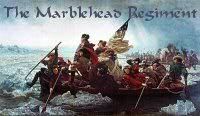The Death of Nelson
It was the heat of the engagement and Nelson was walking the middle of the quarter-deck with Hardy. He was in the act of turning near the hatchway with his face towards the stern of the Victory, when the fatal ball was fired from the mizzen top of the Redoutable; which, from the situation of the two ships was brought just abaft, and rather below, the Victory's main yard, and of course not more than fifteen yards distant from that part of the deck where Nelson stood. The ball struck the epaulette on his left shoulder, and penetrated his chest. He fell with his face on the deck. Hardy was on Nelson's right (the side furthest from the enemy) and some steps ahead. On turning round he saw Sergeant Major Secker of the Marines, with two seamen raising him from the deck. He had fallen on the same spot on which, a little before, his secretary had breathed his last, with whose blood Nelson's clothes were much soiled. Hardy expressed a hope that he was not severely wounded; to which Nelson replied: "They have done for me at last, Hardy."Still, Nelso showed his courage and character:
"I hope not," answered Hardy.
"Yes," replied Nelson; "my backbone is shot through."
Hardy ordered the seamen to carry Nelson to the cockpit, and now two incidents occured strikingly characteristic of the great man, and strongly marking that energy and reflection which in his heroic mind rose superior even to the immediate consideration of his present awful condition.
While the men were carrying him down the ladder from the middle deck, His Lordship observed that the tiller-ropes were not yet replaced; and desired one of the midshipmen stationed there to go upon the quarter-deck and remind Captain Hardy of that circumstance, and request that new ones should be immediately rove. Having delivered this order, he took his handkerchief from his pocket and covered his face with it, that he might be conveyed to the cockpit at this crisis unnoticed by the crew.
Several wounded Officers, and about forty men , were likewise carried to the Surgeon for assistance just at this time; an dsome others had breathed their last during their conveyance below. Among the latter were Lieutenant William Andrew RAm, and Mr Whipple, Captain's Clerk. The Sugeon had just examined these two officers, and found that they were dead, when his attention was arrested by several of the wounded calling to him, "Mr Beatty, Lord Nelson is here: Mr Beatty, the Admiral is wounded." The Surgeon now, on looking round, saw the handkerchief fall from his Lordship's face; when the stars on his coat, which also had been covered by it, appeared. Mr Burke the purser, and the Surgeon, ran immediately to the assistance of his Lordship, and took him from the arms of the seamen who had carried him below. In conveying him to one of the midshipmen's berths, they stumbled, but recovered themselves without falling. Lord Nelson then inquired who were supporting him; and when the Surgeon informed him, his Lordship replied, "Ah, Mr Beatty! you can do nothing for me. I have but a short time to live: my back is shot through."Nelson died at 4:30pm, after learning of the great victory he had achieved.
The next day, since there was no usual material to make a coffin, Nelson's body was placed in a cask, filled with brandy, to preserve the body for its voyage back to England, which took five long weeks.
Upon arrival, at the beginning of December, the body was removed, found to be in excellent condition externally, and lovingly prepared for burial.
On 21 December 1805, Nelson's body was placed in a coffin previously given to Nelson, made of the mast of the French ship L'Oriente, which Nelson had defeated at the Nile.
The coffin which will contain the body is made out of the mast of L'Orient French ship which blew up. A brass engraved plate, with an inscription to the effect is fixed on the lid of the coffin. From the shape, it appears to have been made at sea, by a ships carpenter, the shoulder's being square, instead of the usual way made by Undertakers. The substance about an inch thick, is covered with fine black, the inside lined with superfine crape, and the ruffling, pillow, mattress, and sheets, is white satin. This coffin, which is extremely plain will be placed into a leaden coffin, and the whole will be put into an oak case, covered with crimson or black velvet, and finished with guilt furniture.The coffin was placed in an outer, black coffin, which was displayed for public viewing from 5 January-7 January 1806.
On 8 January 1806, Nelson's coffin was transported in a solemn and magnificent procession, two miles, down the Thames to Westminster.
England mourned and people lined the streets as the coffin was moved for burial.
On 9 January 1806, the funeral was held at St. Paul's Cathedral and lasted from 1pm-6pm.
The coffin was buried in St. Paul's, where it can be visited to this day.
 I Remember
I Remember
















































<< Home